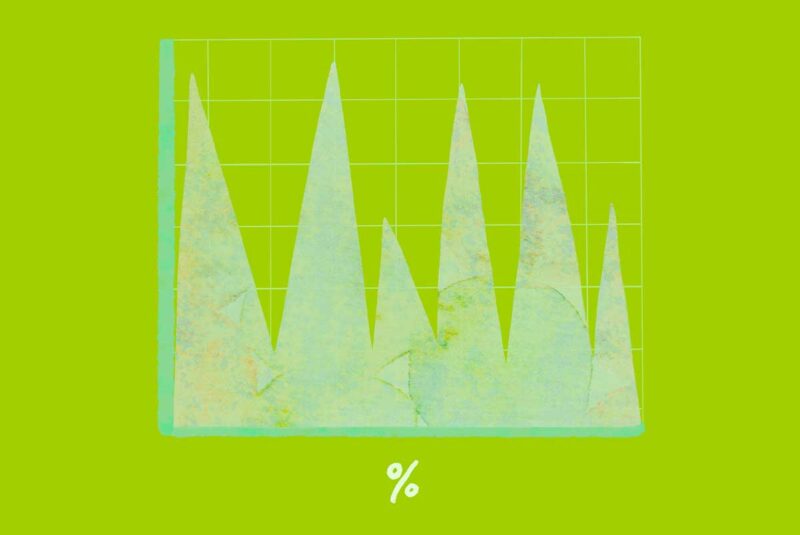An investment portfolio is a term that comes up quickly in any conversation about investing. The word “portfolio” comes from the Latin word “portafoglio,” which is a case for carrying loose papers.[1]
Before the internet, it was common for brokers to keep track of their clients’ investments in separate notebooks or binders (aka portfolios). These assets are mostly digital now, but the practice was so widespread we still refer to an entity’s unique collection of investments as an investment portfolio.
Portfolio management is the strategic supervision of investments over time. It involves choosing what investments to make, deciding how to react to market fluctuations, and creating a strategy that accounts for individual risk tolerance and goals.
How Does Portfolio Management Work?
Usually, the goal of portfolio management is to increase the portfolio’s value as much as possible – in a responsible fashion. Individuals can do this for themselves, or they can hire a professional portfolio manager, who will seek to accomplish growth goals on behalf of their clients.
Research, analytical skills and decision making are crucial components of portfolio management. Here are a few elements that should go into crafting an overall management strategy, whether at an individual level or for a client.
- Goal setting: Getting specific regarding your time horizon and growth goals is critical. Think of it as creating the road map you’ll check your progress against over time.
- Risk tolerance: How comfortable are you with losing the money you invested? Assessing your risk tolerance will help you decide what investment opportunities to pursue.
- Investing budget: What percentage of your salary do you plan to invest each month? Once you have that number, let’s say 10%, how do you want to allocate those funds?
- Social responsibility: Is it important to you to invest in green companies? Or maybe you want to avoid companies that sell addictive substances, like tobacco. Whatever your personal criteria, it’s vital information for crafting your individual plan.
Next, we’ll move on to the two main types of portfolio management: active vs. passive.
Active portfolio management
Just like it sounds, active portfolio management is action-oriented and more hands-on than the passive style. This extra attention aims to outperform a particular benchmark, often the performance of a stock market index.
Let’s look at an example. An index fund you may have heard of is the S&P 500 (The Standard and Poor’s 500). It’s an index of 500 large companies in the U.S. One of the downsides of investing in an index is that you can’t customize it. By investing in this index, you must invest in all the stocks in the index, even if there are companies you’d rather avoid.
An active portfolio manager would choose individual stocks to invest in with the hopes of outperforming the S&P 500 over time. They would base stock decisions on their research and market analysis. If they choose wisely, they could surpass the index. But if they choose poorly, they could underperform.
Ideally, active portfolio management leads to higher returns than passive management. However, this extra effort comes with a price – usually higher management fees. The difference may seem small, for example, a 1% balance fee for active management versus 0.25% for passive. But if you invested $100,000 over 20 years, your portfolio’s value would be reduced by nearly $30,000 because of that fee increase.[2]
Generally, active portfolio management refers to professional services, but an individual can be an active portfolio manager. This involves researching the market, economic and political trends that could impact specific companies to try and forecast which individual stocks they should invest in. In this case, they assume more risk – as they could underperform the market – and it’s usually more of a time commitment in terms of research.
Passive portfolio management
Passive management is less involved. Generally, these strategies are designed to keep in line with the returns of a benchmark index.
ETFs (exchange-traded funds) are one example. They can be structured to track specific indexes, like the S&P 500. This removes the burden of choosing individual stocks from the investor.
One downside of the passive style is that you aren’t going to outperform the market. However, you won’t underperform it either. And you save on the active management fees.
Do I Need a Portfolio Manager?
It can be tempting to skip the fees of hiring a professional portfolio manager by trying to do it yourself. Here are a few questions you should ask yourself before making a decision.
- Do you want to learn about investing? Unless you have a finance background, you’ll likely need to teach yourself many vital concepts. Does finance interest you, or do you find your eyes glazing over? If you can’t stand it, professional help might be best.
- How much time do you want to dedicate? Another benefit of hiring a professional manager is they’re getting paid to do research. If you manage your portfolio, you’ll have to use your valuable free time, and likely won’t have the same resources.
- How large/complicated is your situation? Do you have multiple accounts to manage? Are there investments in other countries? It can be worth hiring help to avoid headaches or more serious consequences, like owing extra money in taxes.
Managing your portfolio isn’t for everyone. Seeking professional help can be wise if you’re short on time or not financially inclined.
How can I find a portfolio manager?
One of the most straightforward ways to find a portfolio manager is through your employer.
If they offer a 401(k) program, your organization is likely already partnered with a plan provider to manage those funds. Fidelity Investments and Charles Schwab are common examples.
When you enroll in your 401(k) through one of these financial partners, you may have the option to make some customizations. They’re usually simple choices, such as picking a target retirement date range or choosing an investment risk level.
While your input is more limited when working through a company plan, your portfolio is technically professionally managed.
If you work as a contractor, or your company doesn’t offer a 401(k), you should consider an IRA (individual retirement account). With an IRA, you have more options – from the company you choose to partner with to more input over the investments you make.
What Goes Into Portfolio Management?
There are many different elements of successful portfolio management. Once the initial strategy has been created, here are some ongoing areas to monitor.
Asset allocation
There are different types of investments; take stocks vs. bonds. There are also riskier investment types, like cryptocurrency. Your allocation determines how you distribute investments into their respective buckets.
Your risk tolerance will play an important role in allocation. For example, if you’re a more aggressive investor, you might have a higher percentage of your investments dedicated to stocks.
The idea would be that you’re willing to subject yourself to the threat of market volatility in exchange for a higher potential return.
Diversification
As the adage goes, don’t put all your eggs in one basket.
A good portfolio management strategy will ensure diversification isn’t overlooked. Keep in mind that there are different types of asset diversification.
For example, you can diversify by choosing other companies within an industry, diversifying by industry, and diversifying by geography.
Rebalancing
Life happens, both to us and our investments. Rebalancing is the art of recalibrating over time to ensure you’re adjusting your strategy as needed to meet your goals.
Your goals may change over time, like if you have children or your career situation dramatically changes.
Being adaptable isn’t just an important life skill. It matters with your portfolio, as well.
Tax considerations
Nobody can avoid taxes, but savvy strategists find ways to pay as little as possible. This can save you a great deal of money in the long run.
Create Something To Manage
Nobody can manage something that doesn’t exist. While deciding on the right plan is important, ensure you’re taking the steps necessary to invest.
The earlier you start, the more time becomes your friend, allowing your wealth to grow.
The Short Version
- Portfolio management is the strategic supervision of investments over time
- Ideally, active portfolio management leads to higher returns than passive management. However, this extra effort comes with a price – usually higher management fees
- Managing your portfolio isn’t for everyone. Seeking professional help can be a wise decision if you’re short on time or not financially inclined
Vocabulary.com. “Portfolio – Definition, Meaning & Synonyms.” Retrieved September, 2022, from https://www.vocabulary.com/dictionary/portfolio
U.S. Securities and Exchange Commission. “Investor Bulletin: How Fees and Expenses Affect Your Investment Portfolio.” Retrieved September, 2022, from https://www.sec.gov/investor/alerts/ib_fees_expenses.pdf




